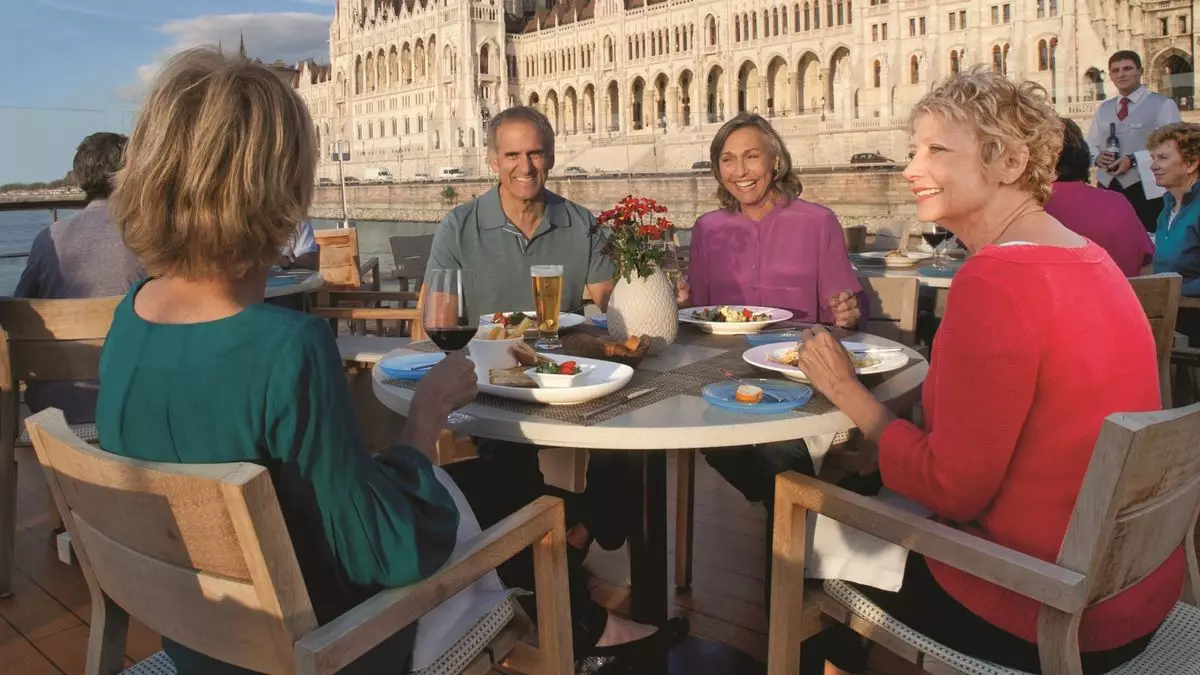Viking Holdings has announced a robust 11% increase in revenue for the third quarter, hitting $1.68 billion. This performance comes at a time when inventory levels indicate that 70% of capacity is already sold for 2025. These figures reflect Viking’s resilient positioning in the travel and cruise industry, appealing particularly to its core demographic of couples aged 55 and over—individuals who tend to plan their vacations well in advance. CFO Leah Talactac’s insights during a recent investor conference call underscore the company’s strategy of early bookings, which inherently extends their booking curve.
However, Talactac highlighted potential risks associated with this approach. While early bookings provide a sense of security for revenue forecasting, they may limit Viking’s ability to capitalize on potential price surges in the future. This delicate balance poses a challenge for Viking as they navigate market dynamics. The CFO has acknowledged that adjustments may be needed if the demand fluctuates in the upcoming year, indicating a level of cautious optimism that is prudent for a company managing a large volume of future bookings.
Viking’s decision to focus primarily on the over-55 age group appears to be a strategic boon. This demographic is not only more likely to plan ahead but also demonstrates a keen interest in securing travel slots much earlier than younger counterparts. According to data released on November 3, Viking has amassed $4.33 billion in advance bookings for 2025 tours, outpacing the previous year by 26% at the same time in the booking cycle. This trend suggests strong consumer confidence in Viking’s offerings and highlights the importance of understanding customer behavior within specific segments of the travel market.
However, there is an inherent risk in catering predominantly to this demographic. As travel preferences evolve, Viking may need to diversify its customer base to ensure its long-term growth and sustainability. As such, understanding the nuanced behaviors of travelers across different age groups could yield richer insights and potentially inform future marketing and product development strategies.
A key area of interest for Viking is its operations on the Nile River. Talactac discussed the security dynamics in the Middle East following the Hamas attack on Israel, which may pose challenges to financial comparisons for 2025. Despite these geopolitical nuances, she emphasized that the Nile market constitutes only a small portion of Viking’s overall capacity. This statement serves to reassure investors that—while the Nile cruises are an appealing offering—overall company performance will not hinge solely on this market segment.
Viking recently introduced two new river ships, the Viking Hathor and Viking Sobek, boasting what Viking’s chairman, Torstein Hagen, referred to as the “best on the river” from a consumer perspective. As Viking prepares to add another four ships over the next two years, it underscores the company’s commitment to enhancing its fleet and maintaining a competitive edge in the cruising market on the Nile.
The conversation around potential expansion beyond Viking’s current brand structure remains speculative for now, as Hagen conveyed no immediate plans to diversify. This cautious approach may be indicative of a broader trend in the industry, where companies prefer to consolidate their strengths before venturing into untested waters.
On the financial front, Viking’s net income for the last quarter stood impressively at $375 million, a significant recovery from a staggering loss of $1.24 billion a year earlier, which was heavily influenced by derivative losses connected to their IPO process. Such recovery suggests a stabilizing operational landscape and a potential return to profitability that could bolster Viking’s market position.
Hagen’s declaration that Viking has no intentions of paying dividends to shareholders and aims to maintain its substantial cash reserves indicates a strategy focused on financial flexibility and preparation for future growth opportunities. This approach positions Viking Holdings not only as a viable player against its contemporaries but as a strategic contender ready to seize potential acquisitions when they arise.
Viking Holdings’ third-quarter performance paints a promising picture of growth amidst various strategic considerations, market opportunities, and external challenges. The company’s focus on customer demographics and continued investment in its fleet will be critical as it navigates the ever-evolving landscape of the cruise industry.

